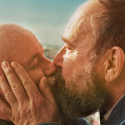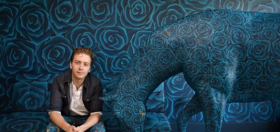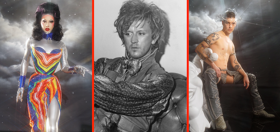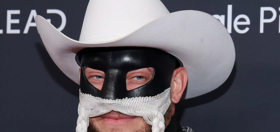Webster Hall, 127 MacDougal Street and the Pyramid Club may not exactly be household names, but the Greenwich Village Society for Historic Preservation is working to change that.
The GVSHP is pressuring New York City’s Landmarks Preservation Commission to recognize and protect significant LGBT sites around the city. Without those protections, important buildings could be altered or even demolished. That even includes the Stonewall Inn, which is a national landmark but not a city landmark.
We’ve put together a little scenic tour of some sites targeted for preservation, then and now.
West Village’s Julius’ Bar
How about we take this to the next level?
Our newsletter is like a refreshing cocktail (or mocktail) of LGBTQ+ entertainment and pop culture, served up with a side of eye-candy.


We’ll start with a site that’s relatively unchanged — in fact, it still has the original name. Julius’ was the site of a “sip-in” to protest laws that forbade the serving of alcohol to gays. “3 DEVIATES INVITE EXCLUSION BY BARS” screamed a New York Times headline.
186 Spring Street


Built around 1800, 186 Spring Street became a gay commune in, of course, the early ’70s. Oh, if those walls could talk. Residents of the house were involved in the formation of early civil rights groups like the Gay Activists Alliance and the National Gay and Lesbian Task Force. (Later, Beastie Boy Adam Horovitz lived there.) Despite the state finding “Extraordinary Significance” at the site, developer Stephane Boivin bought and destroyed the building in 2012 to make room for condos that never materialized. He’s now being sued by an equity fund for improper demolition.
Church in the Village


Birthplace of PFLAG, the Metropolitan-Duane United Methodist Church is still going strong.
The Pyramid Club

A counter-cultural mecca throughout the ’80s, the Pyramid Club hosted Warhol stars, RuPaul, Madonna, Lady Bunny and the Red Hot Chili Peppers—though probably not all at the same time. It’s also the origin of Wigstock, and was crucial to the evolution of New York drag. It gave rise to similar venues like CBGB’s, Area and Danceteria, all of which it has outlived.
Webster Hall


Another drag destination, Webster Hall was finally declared a city landmark in 2008. But its bawdy history goes back a hundred years, when in 1913 a socialist magazine affectionately called it the “Devil’s Playhouse.” The LGBT community held drag balls there in the 1920s.
127, 129, and 131 MacDougal Street


Built in 1829(ish), these buildings were the site of early gay clubs in the 1920s. In fact, this entire block was the epicenter of gay commercial activity in 1920s New York. Eva Kotchever, a Polish Jewish lesbian resident of the building, was arrested for her “obscene” lesbian poetry. A sign on the door read “Men are admitted but not welcome.” Today the row hosts a wine bar and pizzeria.




















Kangol
Landmark and work hard to preserve because otherwise the billionaires will tear it all down to build luxury condos.
DShucking
History of gay rights> Yawn. Where are the dick pics?